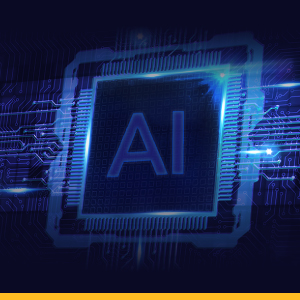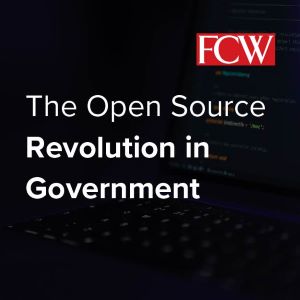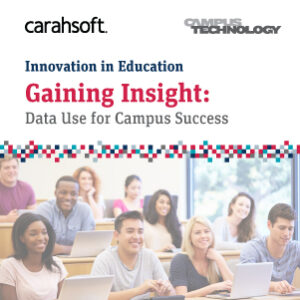 Last year set a landmark standard for innovation in artificial intelligence (AI). Federal, State, and Local Governments and Federal Systems Integrators are eager to learn how they can implement AI technology within their agencies. With the recent Presidential Executive Order for AI, many Public Sector-focused events in 2024 will explore AI modernizations, from accelerated computing in cloud to the data center, secure generative AI, cybersecurity, workforce planning and more.
Last year set a landmark standard for innovation in artificial intelligence (AI). Federal, State, and Local Governments and Federal Systems Integrators are eager to learn how they can implement AI technology within their agencies. With the recent Presidential Executive Order for AI, many Public Sector-focused events in 2024 will explore AI modernizations, from accelerated computing in cloud to the data center, secure generative AI, cybersecurity, workforce planning and more.
We have compiled the top AI events for Government for 2024 that you will not want to miss.
1. AI for Government Summit
May 2, 2024, Reston, VA | In-Person Event
The AI for Government Summit is a half-day event designed to bring together Government officials, AI experts and industry leaders to explore the transformative potential of AI in the public sector. As Governments worldwide increasingly adopt AI technologies to enhance efficiency, improve services and address complex challenges, this summit will serve as a platform for collaboration, discussion and sharing knowledge on the latest advancements and best practices in AI deployment within Government organizations.
Sessions to look out for: Cybersecurity & AI – Safeguarding the Government and Generative AI Government Use Case Panel
Carahsoft is proud to host this inaugural event alongside FedInsider. Join us and over 100 of our AI & machine learning technology and solution providers as they speak towards AI adoption in our Public Sector and how they are using AI to solve our government’s most critical challenges. Attendees will also hear from top government decision-makers as they share unique insights into their current AI projects.
2. NVIDIA GTC
March 18 – 21, 2024, San Jose, CA | Hybrid Event
Come connect with a dream team of industry luminaries, developers, researchers, and business strategists helping shape what’s next in AI and accelerated computing. From the highly anticipated keynote by NVIDIA CEO Jensen Huang to over 600 inspiring sessions, 200+ exhibits, and tons of unique networking events, GTC delivers something for every technical level and interest area. Whether you join us in person or virtually, you are in for an incredible experience at the conference for the era of AI.
Sessions to look out for: What’s Next in Generative AI and Robotics in the Age of Generative AI
Carahsoft serves as NVIDIA’s Master Aggregator working with resellers, systems integrators, and consultants. Our team provides NVIDIA products, services, and training through hundreds of contract vehicles.
Carahsoft is proud to be the host of the GTC Public Sector Reception on Tuesday, March 19th.
Please visit Carahsoft and our partners at the following booths:
- Government IT Solutions: Carahsoft (#1726), Government Acquisitions (#1820), World Wide Technology (#929)
- AI/ML & Data Analytics: Anaconda (#1701), Dataiku (#1704), Datadog (#1033), DataRobot (#1603), Deepgram (#1719), Domino Data Labs (#1612), Gretel.AI (G130), H2O.AI (G124), HEAVY.AI (#1803), Kinetica (I132), Lilt (I123), Primer.AI (I126), Red Hat (#1605), Run:AI (#1408), Snowflake (#930), Weights & Biases (#1505 & G115)
- AI Infrastructure: Dell (#1216), DDN (#1521), Edge Impulse (#434), Lambda Data Lab (#616), Lenovo (#1740), Liqid (#1525), Pure Storage (#1529), Rescale (#1804), Rendered.AI (#330), Supermicro (#1016), Weka (#1517)
- Industry Leaders: AWS (#708), Google Cloud (#808), HPE (#408), Hitachi Vantara (#308), IBM (#1324), Microsoft (#1108), VAST Data (#1424), VMware (#1604)
3. 5th Annual Artificial Intelligence Summit
March 21, 2024, Falls Church, VA | In-Person Event
Join the Potomac Officers Club’s 5th Annual AI Summit, where federal leaders and industry experts converge to explore the transformative power of artificial intelligence. Discover innovative AI advancements, engage in dynamic discussions, and forge strategic collaborations with key partners at this annual gathering of the movers and shakers in the AI field. Hosted by Executive Mosaic, this summit will be held in Falls Church, Virginia.
Sessions to look out for: Leveraging Collaboration to Accelerate AI Adoption in the DoD and Operationalizing AI in Government: Getting Things Done with Automation
Carahsoft is the master aggregator for Percipient AI, a Silver Sponsor, and Primer AI, the Platinum Sponsor. Mark Brunner, President of Federal at Primer AI, will also be speaking at the event.
4. INSA Spring Symposium: How AI is Transforming the IC
April, 4, 2024, Arlington, VA | In-Person Event
Join 300+ intelligence and national security professionals at INSA’s Spring Symposium, How Artificial Intelligence is Transforming the IC, on Thursday, April 4, from 8:00 am-4:30 pm at the INSA/NRECA Conference Center in Arlington, VA. Key leaders from government, academia, and industry will discuss cutting-edge AI innovations transforming intelligence analysis, top priorities and concerns from government stakeholders, developments in ethics and oversight, challenges and opportunities facing the public and private sector and more!
Session to look out for: AI Ready? Challenges from a Data-Centric Viewpoint
Meet with Carahsoft partners AWS, Google Cloud, Intel, and Primer.
5. Google Next ‘24
April 9 – 11, Las Vegas, NV | In-Person Event
Explore new horizons in AI at Google Cloud Next ’24 in Las Vegas, April 9–11 at Mandalay Bay Convention Center. Dive into AI use cases, learn how to stay ahead of cyberthreats with frontline intelligence and AI powered security and boost data and thrive in a new era of AI. Plus, see our latest in AI, productivity and collaboration, and security from Google Public Sector.
Carahsoft will be a sponsor of Google Next ‘24 with a significant public sector presence and plans to host a reception as well.
6. SC24
November 17 – 22, 2024, Atlanta, GA | Hybrid Event
Supercomputing (SC) is the longest running and largest high performance computing conference. SC is an unparalleled mix of thousands of scientists, engineers, researchers, educators, programmers, and developers. Hosted by The Association for Computing Machinery & IEEE Computer Society, SC24 is hosted in Atlanta, Georgia.
Carahsoft is proud to attend SC24 for a fourth year as the master aggregator serving the public sector. Carahsoft will be hosting an extensive partner pavilion showcasing daily demos of our technology and solution partners, demonstrating use-cases in AI and HPC intended for higher-ed organizations, research institutions, government agencies, and more.
Join us at our public sector reception for a night of networking with leading decision-makers and solution experts on November 20.
7. Elastic Public Sector Summit ‘24
March 13, 2024, Pentagon City, VA | In-Person Event
Join top Federal program executives and IT leaders to learn firsthand how advances in data management, search and analytics capabilities are helping agencies turn data into mission value faster and more productively for citizens and Government employees. Learn how agencies are leveraging these capabilities for cybersecurity, operational resilience, and preparing for the new era of generative AI. FedScoop, Elastic and Carahsoft will co-host this summit in Pentagon City, Virginia.
As a top-level sponsor of Elastic’s Public Sector Summit, Carahsoft will host a pavilion on the exhibit floor that features Elastic’s foremost technology partners for the hundreds of projected government attendees.
8. CDAO Government
September 17 – 19, 2024, Washington DC | In-Person Event
This event brings together the latest technological advancements and practical examples to apply key data-driven strategies to solve challenges in Government and greater society. Join a unique mix of academia, industry and Government thought leaders at the forefront of research and explore real-world case studies to discover the value of data and analytics. Located in Washington, D.C., CDAO Government will be hosted by Corinium Intelligence.
Carahsoft was proud to be a Premier Sponsor at the 2023 CDAO Government, involving numerous of our vendor partners, Cloudera, and HP, Alation, Informatica, Progress|MarkLogic, Snowflake, and Tyler Technologies, Alteryx, Coursera, DataRobot, Databricks, Elastic, Immuta, Primer AI, and Qlik.
Carahsoft looks forward to participating as a leading sponsor again at the 2024 CDAO Government.
9. OODACON
November 5 – 6, Reston, VA | In-Person Event
The world is at a transition point where technology is enabling rapid changes that can drive both positive and negative outcomes for humanity. It is also empowering many bad actors and poses new threats. The essence of OODAcon lies in its capacity to forge a robust community of leaders, experts, and practitioners that serve as a collective force that can propel us towards a brighter future.
Join us at the Carahsoft Conference and Collaboration Center to discuss how disruptive technology can solve the most pressing issues of today.
10. AWS Public Sector Summit
June 26-27, 2024, Washington DC | In-Person Event
Join Carahsoft and our partners for two days on innovation, collaboration and global representation. Designed to unite the global cloud computing community, AWS Summits are designed to educate customers about AWS products and services, providing them with the skills they’ll need in order to build, deploy, and operate their infrastructure and applications.
As a top-level sponsor of AWS’ Public Sector Summit, Carahsoft will host a pavilion on the exhibit floor that features AWS’ foremost technology partners for the thousands of projected government attendees.
Learn More About Previously Held Events
11. CDAO Advantage DoD24 Defense Data & AI Symposium
Carahsoft was at CDAO’s inaugural Advantage DoD 2024: Defense Data & AI Symposium from February 20th to 22nd at the Washington Hilton in Washington, DC. The symposium provided a platform for over 1000 government officials, industry leaders, academia, and partners to converge and explore the latest advancements in data, analytics, and artificial intelligence in support of the U.S. Department of Defense mission. Carahsoft had a small tabletop partner pavilion, featuring our vendor partners Alteryx, DataRobot, Collibra, Elastic, Databricks, PTFS, EDB, Weights & Biases, and Clarifai.
Throughout the symposium, attendees from diverse backgrounds, including technical programmers, policymakers, and human resources professionals, gained valuable insights into emerging technologies and best practices for integrating data-driven strategies into organizational frameworks. Attendees also enjoyed two networking receptions hosted by Booz Allen Hamilton and C3.ai.
The agenda featured compelling speaking sessions including topics such as:
- Task Force Lima – The Way Forward (Goals and Progress)
- LLMs and Cybersecurity: Practical Examples and a Look Ahead
- DoD GenAI Use Cases and Acceptability Criterias
12. Using Generative AI & Machine Learning in the Enterprise
This intimate one-day 500-person conference curated data science sessions to bring industry leaders and specialists face-to-face to educate one another on innovative solutions in generative AI, machine learning, predictive analytics, and best practices. Attendees saw a mix of use-cases, technical talks, and workshops, and walked away with actionable insights from those working on the frontlines of machine learning in the enterprise. Hosted by Data Science Salon, the event was held in Austin, Texas.
Carahsoft partners NVIDIA and John Snow Labs were in attendance; two leading AI and Machine Learning solution providers. Carahsoft serves as the master aggregator for both NVIDIA and John Snow Labs to provide government agencies with solutions that fulfill mission needs from trustworthy technology and industry partners.
While the landscape of government events has always been in flux, the pace of change in 2024 feels downright dizzying. From navigating hybrid gatherings to crafting data-driven experiences, the pressure is on to connect, inform, and engage. This is where the power of AI steps in, not as a silver bullet, but as a toolbox brimming with innovative solutions. Carahsoft’s curated list of Top 12 AI for Government Events is just the starting point. So, do not let the future intimidate you; embrace it. Dive into the possibilities, explore these AI tools, and get ready to redefine what a government event can be. Your citizens—and your data—will thank you.
To learn more or get involved in any of the above events please contact us at AITeam@carahsoft.com. For more information on Carahsoft and our industry leading AI technology partners’ events, visit our AI solutions portfolio and events page.

 “Open source transforms the way agencies manage hybrid and multi-cloud environments. The most critical technology in the cloud, across all providers, is Linux. Everything is built on top of that foundation — both the infrastructure of the cloud and cloud offerings. Given the right partner, the promise of Linux is that it provides a consistent technology layer for agencies across all footprints, including multiple cloud providers, on-premises data centers and edge environments. From that foundation, agencies and their partners can build portable architectures that leverage other open source technologies. Portability gives organizations the ability to use the same architectures, underlying technologies, monitoring and security solutions, and human skills to manage mission-critical capabilities across all footprints.”
“Open source transforms the way agencies manage hybrid and multi-cloud environments. The most critical technology in the cloud, across all providers, is Linux. Everything is built on top of that foundation — both the infrastructure of the cloud and cloud offerings. Given the right partner, the promise of Linux is that it provides a consistent technology layer for agencies across all footprints, including multiple cloud providers, on-premises data centers and edge environments. From that foundation, agencies and their partners can build portable architectures that leverage other open source technologies. Portability gives organizations the ability to use the same architectures, underlying technologies, monitoring and security solutions, and human skills to manage mission-critical capabilities across all footprints.” “If a project is served by a point product, a program needs a platform. And I consider a platform to manage the student experience to be as vital to the higher ed technology stack as the SIS, the LMS, and the CRM. This is the missing link that will drive the metrics you care most about. Getting rigorous at a student-specific level about the experiences each is having is the only way to take actions to make them better — at both a campus level and at an individual level. While the three other systems provide some insight into the student experience via the operational data they generate, they mostly offer lagging indicators. They can tell you that someone hasn’t been in class for three consecutive sessions, isn’t completing assignments, or is in danger of being put on academic probation. But they won’t tell you how the student is feeling. If they’re actually engaged in teaching and learning. If your school doesn’t understand why a student is acting a certain way, it’s not addressing the root problem.”
“If a project is served by a point product, a program needs a platform. And I consider a platform to manage the student experience to be as vital to the higher ed technology stack as the SIS, the LMS, and the CRM. This is the missing link that will drive the metrics you care most about. Getting rigorous at a student-specific level about the experiences each is having is the only way to take actions to make them better — at both a campus level and at an individual level. While the three other systems provide some insight into the student experience via the operational data they generate, they mostly offer lagging indicators. They can tell you that someone hasn’t been in class for three consecutive sessions, isn’t completing assignments, or is in danger of being put on academic probation. But they won’t tell you how the student is feeling. If they’re actually engaged in teaching and learning. If your school doesn’t understand why a student is acting a certain way, it’s not addressing the root problem.”